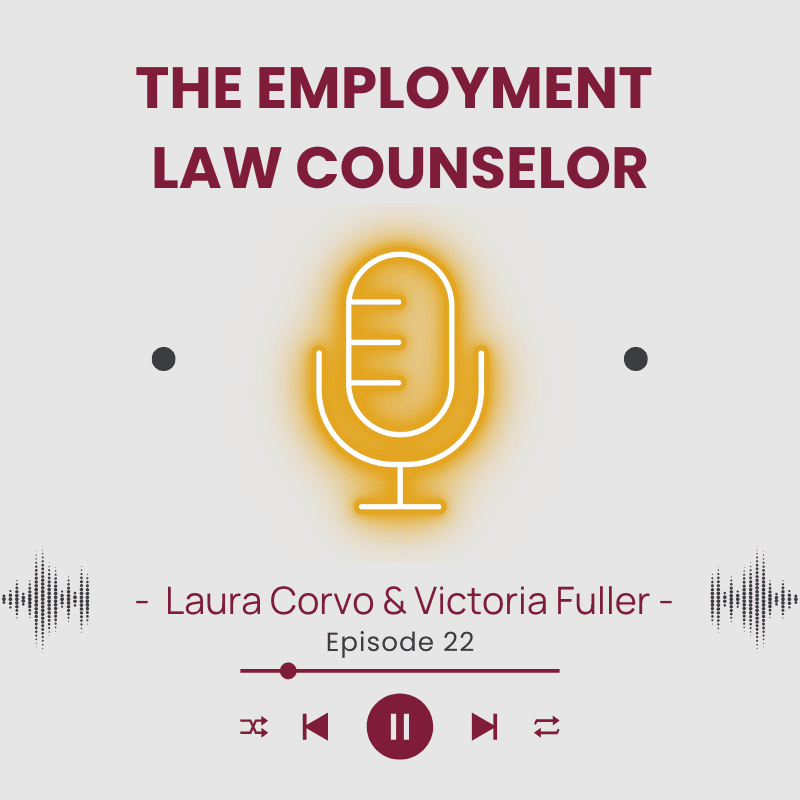October 6, 2025
Sword or Shield? Using Your Contract to Mitigate Risk

Professional services agreements often are treated as a formality—boilerplate documents signed at the outset of an engagement and then forgotten. In reality, these agreements are among the most effective tools available for managing professional liability. A well-drafted contract functions both as a shield, deterring liability and narrowing claims, and as a sword, enabling professionals to recover fees and defend their work when disputes arise.
Understanding how to draft and deploy key provisions enables professionals to allocate risk more effectively, close the “expectation gap” for clients, and transform their engagement letters from routine paperwork into powerful risk management devices.
Clarifying the Relationship
The first function of a professional services agreement begins with identifying the client. Without a clear designation, affiliates, related entities, or even employees of clients may attempt to improperly assert rights under the engagement. By expressly naming the client, and sometimes by excluding others, professionals can avoid unintended exposure to claims from parties for whom they did not perform services and to whom they should not be liable.
Equally important is defining what services will and will not be performed. Liability often arises not from the work performed, but from alleged failures to do something never contemplated. For example, a compilation engagement is distinct from an audit; the former involves presenting financial information without providing assurance, while the latter requires substantive testing and opinions. If the distinction is not clear, clients may claim they expected audit-level work for a compilation fee. Similarly, an attorney engaged to file a workers’ compensation claim, but who does not want to be responsible for a potentially related premises liability claim, should consider specifically carving a responsibility for such claim out of the engagement. The contract should not only describe what is included but also carve out what is excluded wherever possible.
Cost clarity is another area where it is important to be clear in order to avoid potential disputes. Many professional liability claims stem from fee disagreements that escalate into broader allegations about the quality of services. To reduce this risk, contracts should set out the basis for fees, payment schedules, and—when feasible—budgets or estimates ought to be provided to a client outside of the engagement letter in order to avoid surprises. Professional responsibility rules may dictate what fees can be charged, making careful drafting even more important.
Finally, the agreement should contain disclaimers regarding results. Professionals provide services, not guarantees, and the contract should reflect that distinction. A simple disclaimer that “no results are guaranteed” can go a long way toward aligning client expectations and protecting against claims of professional misconduct rooted in disappointment. These disclaimers should always be tailored to local law, as enforceability can vary by jurisdiction.
Provisions That Protect: Waivers and Limitations
Beyond defining the client and scope, engagement letters can significantly reduce liability exposure through specific risk-allocation provisions. Two stand out as particularly effective: waivers of consequential damages and limitations of liability.
Waiver of Consequential Damages
Consequential damages provisions eliminate exposure to losses that are remote, speculative, or vastly disproportionate to the professional’s fees. Without such a clause, a relatively small engagement could lead to claims for lost profits, business interruption, or diminution in value far exceeding the compensation received.
Key drafting elements include:
- Using clear, express language that excludes consequential, special, incidental, and punitive damages
- Defining barred damages, such as lost profits or diminution in value
- Preserving exceptions only when required by law, such as for fraud or willful misconduct
- Ensuring reciprocity, so both parties are subject to the same limitations.
As an example, New York courts routinely uphold these waivers when negotiated by sophisticated parties, viewing them as legitimate risk allocations. The courts will invalidate a clause only if it is unconscionable—so one-sided that it shocks the conscience—or if the parties lacked meaningful choice.
Meanwhile, California law is similar, though courts pay closer attention to public policy. Under California Civil Code §1668, parties cannot exempt themselves from liability for fraud, willful injury, or statutory violations. In consumer settings, courts are especially cautious, but in commercial contracts between sophisticated parties, consequential damage waivers are often enforced.
Limitation of Liability
Limitation of liability provisions cap total exposure to a predictable level, often tied to the fees paid or the professional’s insurance coverage for some professionals such as design professionals. This protects professionals from open-ended claims and provides greater certainty for both parties.
For these professionals, effective drafting should:
- Tie the cap to insurance coverage or a multiple of fees
- State explicitly that the cap applies regardless of the theory of recovery, including negligence
- Pair the cap with shortened limitations periods, where enforceable
- Ensure internal consistency with indemnity, insurance, and dispute-resolution provisions.
New York courts enforce limitation of liability clauses that are clear and not contrary to public policy. However, they cannot limit liability for gross negligence, willful misconduct, or intentional wrongdoing. For sophisticated commercial parties negotiating at arm’s length, courts are generally deferential to these provisions.
In California, courts likewise uphold limitation of liability clauses but construe them strictly against the drafter. The provisions must be unambiguous, fair, and consistent with public policy. As in New York, they cannot excuse fraud or intentional wrongdoing.
Together, waivers of consequential damages and limitation of liability provisions narrow the scope of recoverable claims, align client expectations with professional obligations, and help manage litigation risk.
Structuring Dispute Resolution
Even with clear definitions and risk allocations, disputes may arise. Venue and arbitration provisions provide a framework for resolving them efficiently and predictably.
For enforceability, these provisions should be:
- Conspicuous: prominently displayed in bold, all caps, or a separate section.
- Acknowledged: separately signed, initialed, or otherwise accepted in writing.
- Consistent: free of contradictions with marketing promises or other contractual language.
- Comprehensive: defining client responsibilities, required representations, and internal controls.
- Practical: spelling out fee arrangements, mediation or arbitration procedures, and jury trial waivers.
Updating agreement templates periodically is essential, as statutes and case law evolve. A clause that was enforceable five years ago may now be subject to new restrictions or judicial interpretations.
Conclusion
An engagement letter should never be viewed as boilerplate. When drafted with care, it becomes the professional’s first line of defense against liability and a strategic weapon for enforcing rights. By precisely defining the client and scope; clearly setting costs and disclaimers; and incorporating waivers of consequential damages, limitations of liability, and strong dispute resolution provisions, professionals can transform a simple contract into both sword and shield.
Ultimately, a well-crafted contract not only manages risk but also reinforces professionalism, strengthens client relationships, and ensures that disputes—when they do arise—are resolved on terms that are fair, efficient, and predictable.
Meet the Authors

Eric G. Cheng
Eric Cheng is well versed in the area of design professionals liability claims. Educated as an architect, he has advised a number of domestic and international design professionals in contract negotiation, risk management, insurance procurement and potential pitfalls in domestic and overseas projects in Asian countries, including China. Eric is a native of Hong Kong, China, and is fluent in Cantonese, Mandarin and English.
Eric has litigated and tried complex construction liability claims brought under New York Labor Law against owners, contractors, subcontractors, construction managers and property managers, as well as clients charged with New York Department of Building violations. Eric also regularly provides coverage analysis focused on construction cases concerning New York Labor Law and other risk transfer–related issues.
In addition, Eric maintains an extensive practice centered on insurance coverage matters that arise out of general liability, professional liability and employment discrimination claims; he defends underlying cases in these areas. Eric also has extensive experience advising corporations on their insurance coverage programs. Having served as a trusted adviser to carriers for many years, Eric enjoys in-depth knowledge of insurance company operations and understands his clients’ need for strategic and proactive legal counsel. Eric can be reached at: Eric.Cheng@WilsonElser.com

Peter J. Larkin
Peter Larkin provides legal counsel and representation to businesses of all sizes, with a particular focus on accountants and accounting firms. He is co-chair of Wilson Elser’s national Accountants Practice. In addition to professional malpractice defense and commercial disputes, Peter’s practice encompasses class actions, federal and state regulatory investigations and proceedings, risk management, ethics proceedings, and transactional matters. He also represents businesses and banking institutions in a wide array of commercial disputes, including matters under the federal and state securities laws, antitrust laws, tax laws and other areas.
Given his strong knowledge of the accounting profession, as well as audit, tax and accounting principles and familiarity with the SEC, PCAOB, DOL, AICPA and various state boards of accountancy, Peter is called upon regularly by accountants facing regulatory inquiries, investigations and other proceedings. Peter also is involved in such diverse areas as securities, antitrust, tax and banking laws, RICO, ERISA, accounting standards, fraud investigations, employment disputes, post-employment restrictive covenants, purchases and sales of professional practices, partnership disputes and separations, and risk management and best practices for accounting and financial professionals. Peter’s effectiveness in these matters is built on his ability to not only translate the law for his clients but also fluently communicate the principles of economics, finance and accounting to judges, juries and opposing counsel.
Prior to joining Wilson Elser, Peter was a court attorney and senior court attorney with the New York Appellate Division, Second Department. He earned his undergraduate degree in accounting.
Peter can be reached at Peter.Larkin@WilsonElser.com
 Daniel E. Tranen
Daniel E. Tranen
Daniel Tranen is the regional managing partner of Wilson Elser’s St. Louis, Missouri, office. Daniel is an accomplished litigator who has handled matters and tried cases across the litigation spectrum and throughout the United States in his more than 25-year law practice. Daniel is licensed in the state and federal courts of Missouri, Illinois, Georgia and Massachusetts, and has previously lived and practiced law in each of these jurisdictions. Daniel currently serves as a cochair of the firm’s national Life Sciences and Product Liability, Prevention & Government Compliance practices.
Daniel is a recurrent speaker for the ABA, DRI, CLM and CPCU and for individual insurers and their policyholders. He writes and speaks about the defense of life sciences companies, insurers in insurance coverage disputes and a variety of other topics in the various practice areas in which he serves Wilson Elser’s clients. Daniel also provides risk management and employment practices advice to life sciences companies and other employers, insurers and professionals. Daniel frequently writes and speaks on issues of attorney risk management and the strategic practice of law. He is a co-editor of Wilson Elser’s coverage and professional liability newsletters, Coverage Matters and Professionally Speaking. Daniel serves on the board of “Spread Ari’s Light,” a foundation that raises funds for services for children with pediatric cancer.
He also currently serves as the chair of the Claims Interest Group for the Society of Chartered Property and Casualty Underwriters (CPCU) and as a board member of the Saint Louis Chapter of the Claims and Litigation Management (CLM) Alliance insurance industry group.
Dan can be reached at Daniel.Tranen@WilsonElser.com
News Type
PLUS Blog
Business Line
Errors and Omissions (E&O), Professional Liability
Contribute to
PLUS Blog
Contribute your thoughts to the PLUS Membership consisting of 45,000+ Professional Liability Practitioners.
Related Podcasts

The Employment Law Counselor Episode 22
Navigating Labor and Employment Challenges During the Holiday Season Happy Holidays from…
Related Articles

A Softening Cyber Market That Can’t Last and Why Today’s Conditions Set the Stage for Tomorrow’s Correction
On the surface, the cyber insurance market looks like a buyer’s market:…

Claims Made Bites: How Pollution Claims Got Us Here
In this recent case an insured learned the hard way the prohibitive…

Semantics and Sophistry of “For”
Cyberattacks are continuing to increase in both volume and sophistication. This is…
